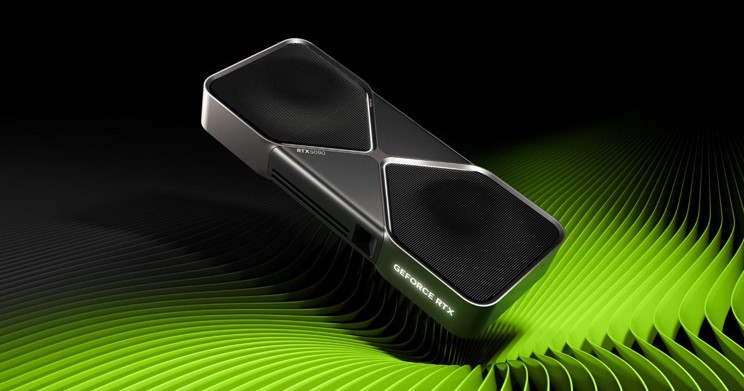엔비디아가 지포스 RTX 50 시리즈 GPU의 AI 워크로드를 가속화하는 엔비디아 NIM과 AI 블루프린트를 공개했다. NIM과 AI 블루프린트는 개발자와 애호가들이 AI를 로컬에서 구축, 반복, 배포할 수 있도록 도와 AI 접근성을 확대한다.
NIM·AI 블루프린트 출시, 로컬 생성 AI 가속화
엔비디아가 지포스 RTX 50 시리즈 GPU의 AI 워크로드를 가속화하는 엔비디아 NIM과 AI 블루프린트를 공개했다. NIM과 AI 블루프린트는 개발자와 애호가들이 AI를 로컬에서 구축, 반복, 배포할 수 있도록 도와 AI 접근성을 확대한다.
지포스 RTX 5090, 5080 GPU는 블랙웰(Blackwell) 아키텍처 기반으로 설계됐다. 블랙웰 아키텍처는 새로운 DLSS 멀티 프레임 생성을 지원해 렌더링된 프레임당 최대 3개의 프레임을 생성하는 AI를 사용해 FPS를 향상시킨다.
RTX 50 시리즈는 최신 생성형 AI 워크로드를 가속화하기 위해 제작됐으며, 초당 최대 3,352조개의 AI 연산(TOPS)을 처리하는 한편, 5세대 텐서 코어와 FP4 정밀도 지원 기능을 갖춰 고급 AI 모델의 실행 속도를 높이고 효율성을 증가시킨다.
엔비디아는 지난달 CES 전시회에서 AI 개발자와 애호가들이 이러한 기능을 활용할 수 있도록 RTX용 엔비디아 NIM과 AI 블루프린트를 공개했다. NIM과 AI 블루프린트는 지포스 RTX 50 시리즈 GPU에 최적화돼 AI PC에서 최첨단 AI 경험을 제공할 수 있도록 지원된다.
AI 모델 개발이 빠르게 발전하고 있지만, 이러한 혁신을 PC에 적용하는 것은 많은 사람들에게 여전히 어려운 과제이다.
허깅페이스(Hugging Face)와 같은 플랫폼에 게시된 모델은 PC에서 실행하기 위해 선별·조정·정량화가 필수적이며, 기존 도구와의 호환성을 보장하기 위해 새로운 AI API에 통합돼야 한다. 또한 최적화된 추론 백엔드 변환도 수반돼야 한다.
RTX AI PC 및 워크스테이션용 NIM 마이크로서비스는 커뮤니티 기반과 AI 모델 접근을 제공해 복잡성을 완화하며 여러 배포 옵션을 제공한다. RTX GPU가 탑재된 PC에서 최적화된 모델을 실행하는 데 필요한 것들을 포함하며, △특정 GPU용 사전 구축 엔진 △텐서 RT SDK △텐서코어 기반 가속 추론용 오픈소스 텐서 RT-LLM 라이브러리 등이 있다.
엔비디아는 마이크로소프트와 협력해 리눅스용 윈도우 서브시스템에서 RTX용 NIM 마이크로서비스와 AI 블루프린트를 활성화하며, 이는 데이터센터 GPU에서 실행되는 것과 동일한 AI 컨테이너를 RTX PC에서 실행할 수 있게 된다.
특히, 양자화를 통하면 모델 크기를 줄여 AI 성능을 최적화할 수 있다. FP16를 사용하는 지포스 RTX 4090에서 플럭스.1 [dev] 모델은 30단계로 이미지를 생성하는 데 15초가 소요된다. 그러나, FP4를 사용하는 지포스 RTX 5090의 경우, 약 5초만에 이미지를 생성할 수 있다.
FP4는 블랙웰 아키텍처에 기본적으로 지원돼, 로컬 PC에 고성능 AI를 배포하는 것이 용이해졌다. 아울러 NIM 마이크로서비스에 통합돼 이전에는 양자화가 어려웠던 모델을 효과적으로 최적화한다.
NIM 마이크로서비스와 AI 블루프린트는 출시를 앞두고 있다. 지포스 RTX 50 시리즈, 지포스 RTX 4090과 4080, 엔비디아 RTX 6000과 5000 전문가용 GPU에 대한 초기 하드웨어 지원이 함께 제공될 예정이며, 향후 추가 GPU도 지원될 계획인 것으로 전해진다.
